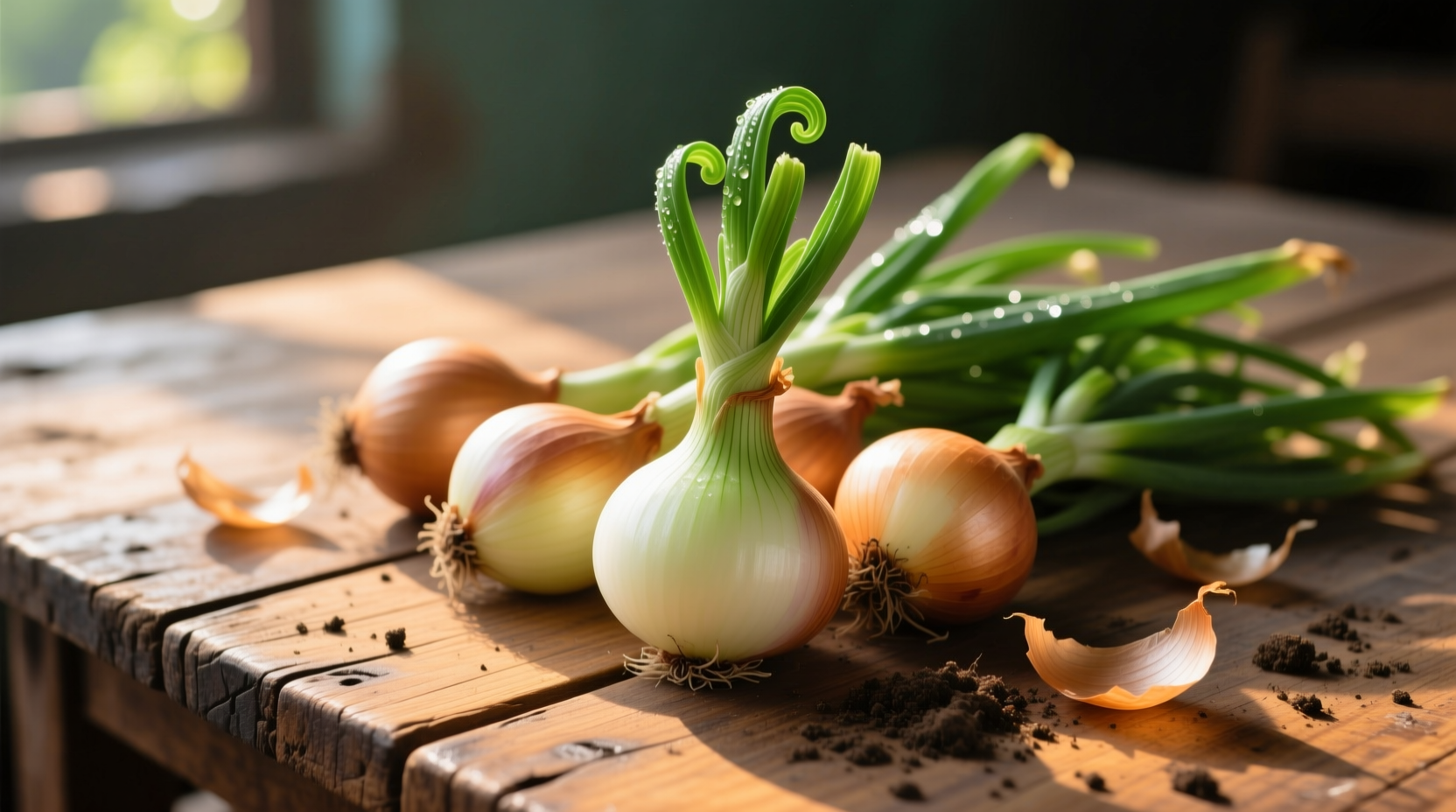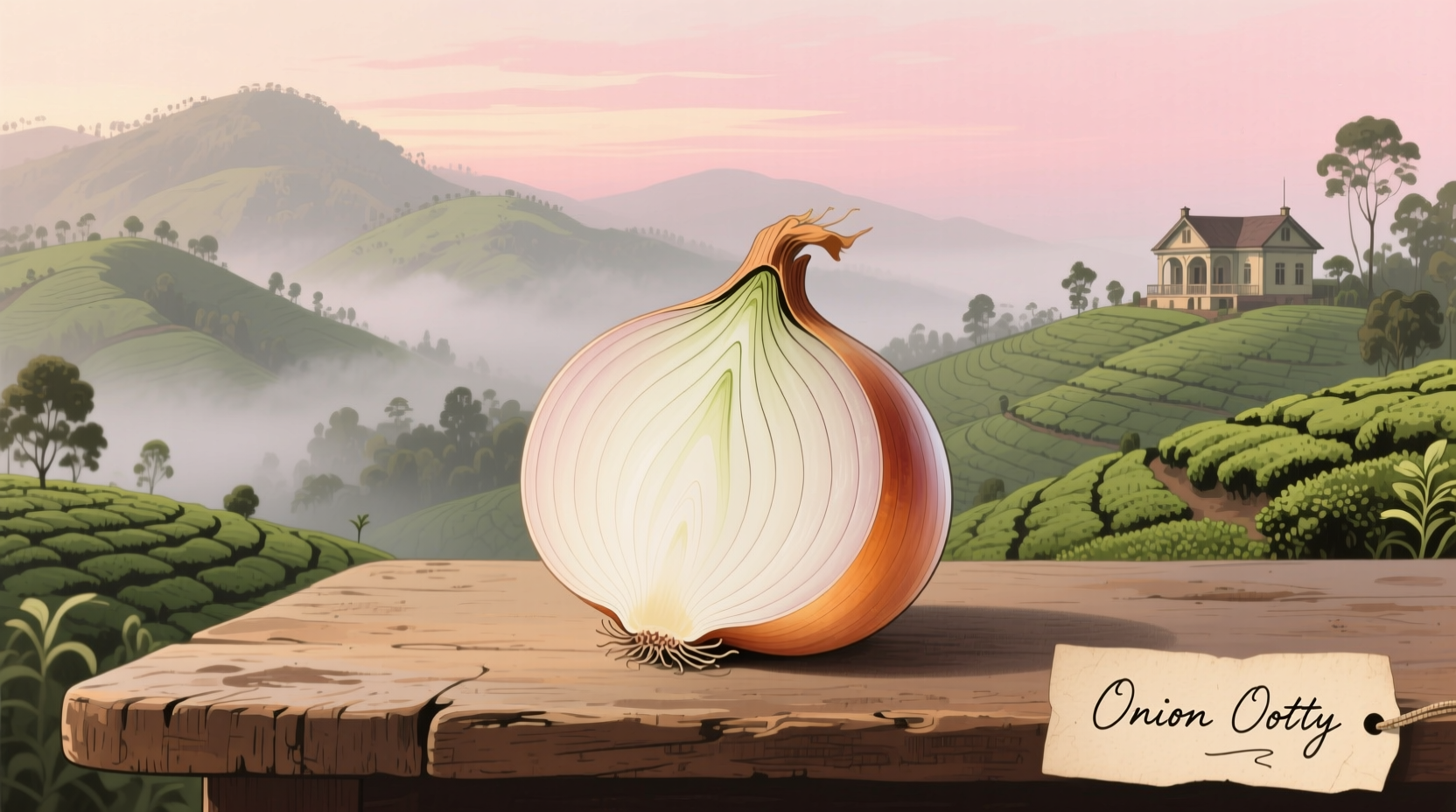When you're searching for authentic regional ingredients, few discoveries are as rewarding as Onion Ooty. This special onion variety has captivated chefs and home cooks alike with its unique flavor profile that elevates dishes without overwhelming them. Unlike conventional onions that make you tear up, Onion Ooty offers a culinary experience that's both practical and delicious.
What Makes Onion Ooty Truly Special
Grown exclusively in the elevated terrain of the Nilgiri Hills at approximately 2,240 meters above sea level, Onion Ooty benefits from a perfect storm of environmental factors. The region's cool temperatures (averaging 10-15°C during growing season), consistent mist, and nutrient-rich red laterite soil create ideal growing conditions that cannot be replicated elsewhere. According to the Tamil Nadu Agricultural University's 2023 crop report, these specific conditions result in onions with 30% less pungent sulfur compounds compared to standard varieties.
The unique climate of Ooty produces onions with a distinctive pale golden skin and crisp white flesh that maintains its structure during cooking. Local farmers have cultivated this variety for generations using traditional methods that preserve soil health and biodiversity, contributing to the onion's exceptional quality.
How Onion Ooty Differs From Regular Onions
| Characteristic | Onion Ooty | Regular Yellow Onion |
|---|---|---|
| Flavor Profile | Mild, slightly sweet with subtle earthy notes | Strong, pungent, sharp when raw |
| Texture | Crisp yet tender, maintains structure when cooked | Softer texture, breaks down more easily |
| Sulfur Content | 30% lower (per Tamil Nadu Agricultural University) | Standard levels |
| Best Culinary Uses | Raw applications, delicate sauces, finishing dishes | Hearty stews, long-cooked dishes, foundational aromatics |
| Seasonality | October-February (peak December-January) | Available year-round |
The Evolution of Onion Cultivation in Ooty
Onion cultivation in the Nilgiri Hills has an interesting history that explains why Onion Ooty developed its distinctive characteristics. British colonists first introduced onion farming to Ooty in the 1840s, bringing European varieties that struggled in the cool climate. Local Tamil and Toda farmers gradually adapted these varieties through selective breeding over generations.
By the 1950s, a distinct regional variety had emerged that was better suited to Ooty's conditions. The Tamil Nadu Department of Horticulture officially recognized this unique variety in 1987, documenting its lower pungency and superior storage qualities compared to standard onions. Today, approximately 1,200 smallholder farmers in the Nilgiri district cultivate Onion Ooty using sustainable practices that have been passed down through generations.
Practical Culinary Applications for Home Cooks
What truly sets Onion Ooty apart is how it transforms everyday cooking. Professional chefs across South India consistently praise its versatility:
- Raw applications: Slice thinly for salads, sandwiches, or as a garnish without causing excessive tearing or overpowering other ingredients
- Sautéing: Cook gently to develop natural sweetness without burning or becoming bitter
- Stocks and broths: Adds subtle depth without dominating the flavor profile
- Pickling: Creates exceptionally crisp, flavorful pickled onions with balanced acidity
When substituting Onion Ooty in recipes, use a 1:1 ratio for raw applications but reduce cooking time by 25% compared to regular onions to preserve its delicate texture and flavor.
Where to Find and How to Select Quality Onion Ooty
Authentic Onion Ooty is primarily available during its harvest season from October through February, with peak quality from December to January. When selecting:
- Look for firm bulbs with dry, papery golden-brown skin
- Avoid onions with soft spots, mold, or sprouting
- The neck should be completely dry and closed
- Heavier onions for their size indicate better moisture content
In India, authentic Onion Ooty is sold at the Ooty Main Market and through Tamil Nadu's cooperative agricultural marketing network. Outside India, specialty Indian grocery stores and premium farmers' markets may carry it during season. Be cautious of imposters—true Onion Ooty will always have a slightly flattened shape compared to the more rounded regular onions.
Proper Storage Techniques for Maximum Freshness
Unlike regular onions that can last for months, Onion Ooty has a shorter shelf life due to its higher moisture content. For best results:
- Store in a cool, dark, well-ventilated place (not the refrigerator)
- Keep away from potatoes which release moisture that accelerates spoilage
- Use within 2-3 weeks for optimal flavor and texture
- Do not wash before storage as moisture promotes mold
If you've purchased more than you can use immediately, consider slicing and freezing Onion Ooty for cooked applications. The frozen onions maintain their flavor well for soups and stews, though texture changes make them unsuitable for raw uses.
Nutritional Benefits Worth Noting
While all onions offer health benefits, Onion Ooty provides some distinctive advantages. Research from the Indian Council of Agricultural Research shows that the cooler growing conditions increase certain beneficial compounds:
- Higher quercetin content (a powerful antioxidant) compared to lowland varieties
- Rich in vitamin C and B vitamins
- Contains prebiotic fibers that support gut health
- Lower sulfur compounds make it gentler on digestion
These nutritional properties make Onion Ooty particularly valuable for those seeking the health benefits of onions without the digestive discomfort that some people experience with more pungent varieties.

When Onion Ooty Shines and When to Choose Alternatives
Understanding the context boundaries for Onion Ooty helps maximize its culinary potential. This variety excels in applications where:
- You want onion flavor without overwhelming pungency
- Raw onion applications are required (salads, sandwiches, garnishes)
- Delicate sauces and dressings need subtle onion notes
- Quick-cooking dishes where onion should maintain texture
However, for dishes requiring:
- Long, slow cooking (like beef bourguignon)
- Strong foundational aromatics
- Caramelization as the primary flavor component
In these cases, regular yellow onions or shallots might serve better. The key is matching the onion variety to the culinary context rather than treating all onions as interchangeable.
Frequently Asked Questions
What makes Onion Ooty different from regular onions?
Onion Ooty has a milder, slightly sweet flavor with 30% less pungency than regular onions due to the cool climate and unique soil conditions of the Nilgiri Hills. It maintains better texture when cooked and causes less tearing when chopped.
When is the best time to find authentic Onion Ooty?
Onion Ooty is in season from October through February, with peak quality and availability from December to January. Outside this window, what's sold as Onion Ooty is likely not the authentic variety.
Can I grow Onion Ooty outside of Ooty?
Replicating true Onion Ooty characteristics requires the specific cool climate (10-15°C), altitude (2,240m), and soil conditions of the Nilgiri Hills. While you can grow similar varieties elsewhere, they won't have the distinctive mild flavor and texture of authentic Onion Ooty.
How should I store Onion Ooty to keep it fresh?
Store Onion Ooty in a cool, dark, well-ventilated place away from potatoes. Unlike regular onions, it has a shorter shelf life of 2-3 weeks due to higher moisture content. Do not refrigerate as cold temperatures can cause spoilage.
Why is Onion Ooty more expensive than regular onions?
Onion Ooty commands a higher price due to its limited seasonal availability, specialized growing conditions, and labor-intensive traditional cultivation methods. The shorter shelf life also contributes to higher transportation and storage costs.











 浙公网安备
33010002000092号
浙公网安备
33010002000092号 浙B2-20120091-4
浙B2-20120091-4